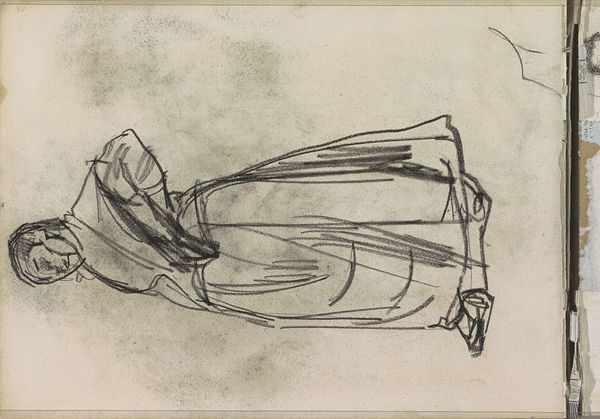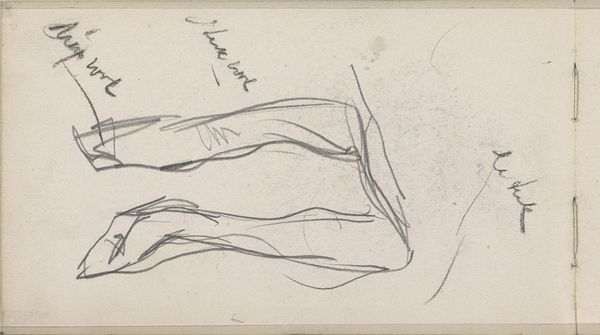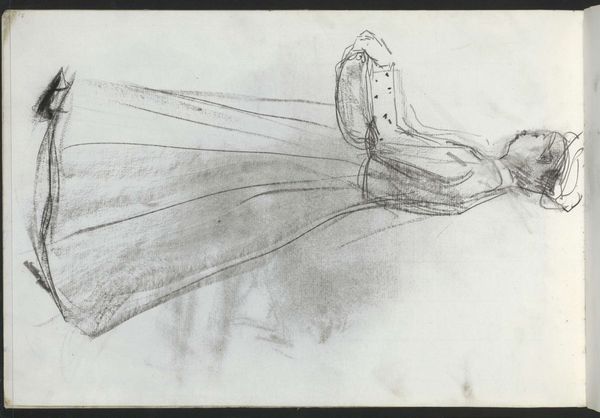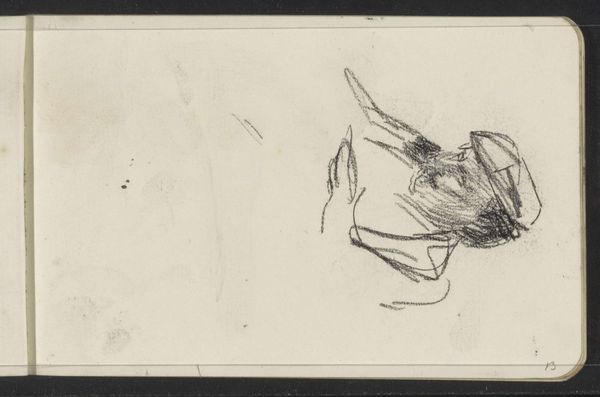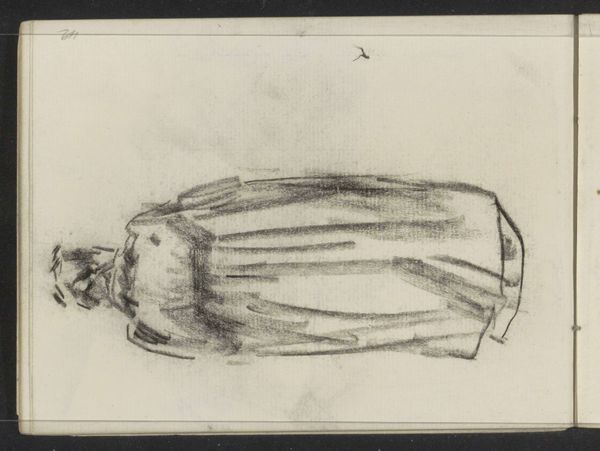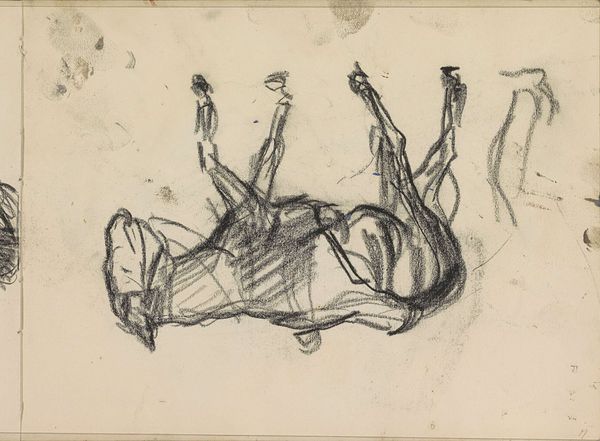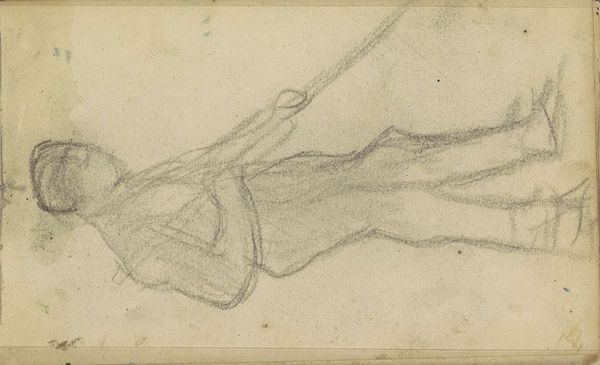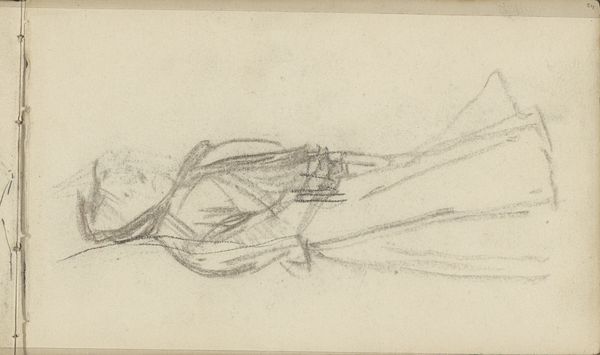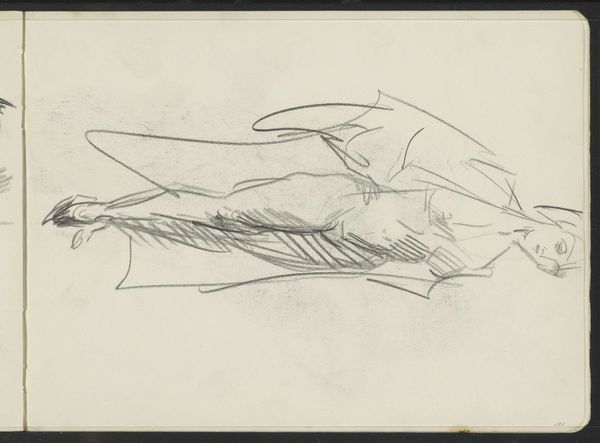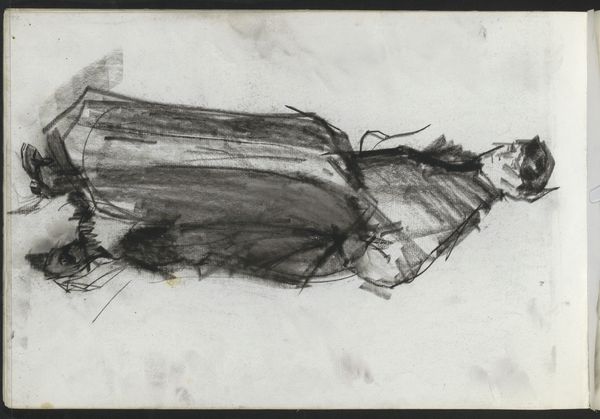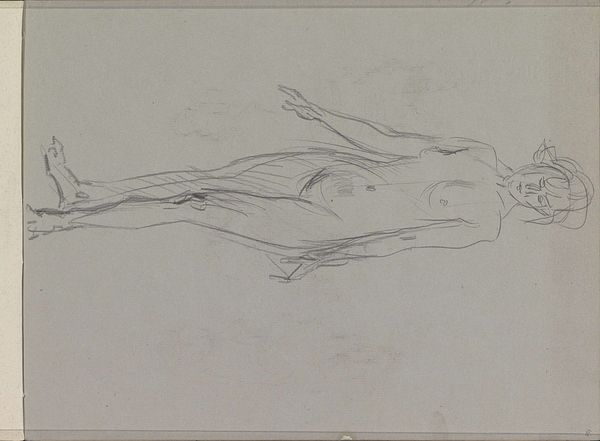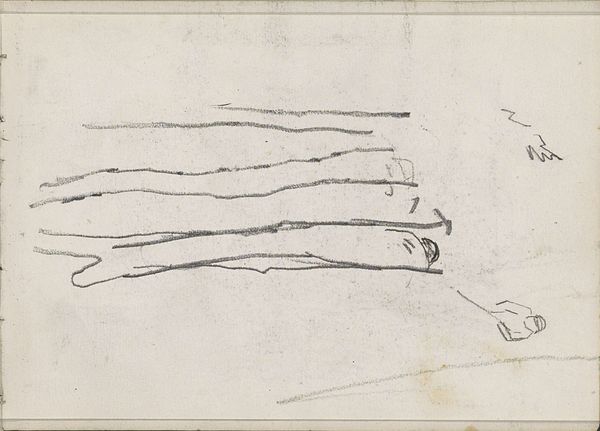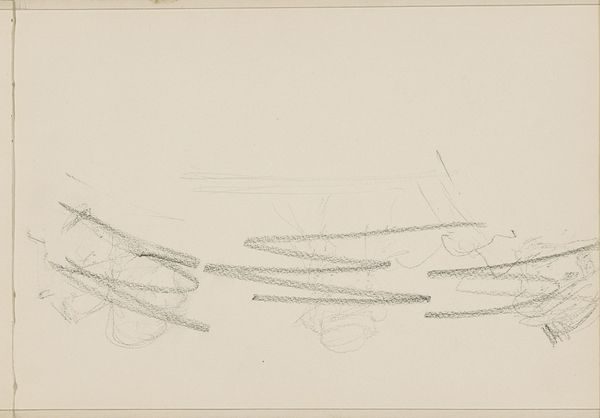
Copyright: Rijks Museum: Open Domain
Curator: Here we have a work by Isaac Israels, entitled "Staande vrouw, in profiel," which roughly translates to "Standing Woman, in Profile." It’s dated sometime between 1875 and 1934 and held here at the Rijksmuseum. Editor: My first thought? Economy. Look at those lines. Israels is using ink on paper with the absolute minimum effort to convey form and movement. It feels ephemeral, like a fleeting glimpse. Curator: Indeed. Israels was working within an Impressionist tradition, prioritizing immediacy and capturing a sense of modern life. These quick sketches were often studies for larger paintings or independent works valued for their spontaneity. Editor: It raises an interesting question about artistic labor, though. Was this quick execution seen as skilled efficiency, or did it perhaps devalue the material and time usually associated with “fine art”? Curator: That's a fascinating point. Certainly, there were academic circles that dismissed Impressionistic sketches as unfinished or lacking substance. But there was also a growing appreciation for capturing the immediacy of modern life, mirroring the fast pace of industrial society. Think about the rise of photography, which changed the very notion of representation. Editor: Exactly. And I'm curious about the paper itself. Is it a fine paper, meant for display, or more of a workaday material meant for studies? The materials used speaks to the intent. Also what kind of ink was it? A cheap ink that fades? The longevity of it tells you about how serious Israels was treating this subject and piece. Curator: The Rijksmuseum’s records don’t specify the paper's specific quality. Israels, moving between elite circles and portraying working class subjects, occupied a unique position in the art world and the societal dynamics are fascinating to consider. His ability to navigate different social spheres allowed him access to a variety of subjects. Editor: A piece like this forces us to consider how those materials, processes, and social contexts intersect. A fleeting image with lasting resonance due to the politics of class. Curator: Ultimately, this drawing reminds us that art is both a reflection of, and a participant in, its historical moment. Editor: It speaks volumes about the changing definitions of "art" and the value we place on materials and production.
Comments
No comments
Be the first to comment and join the conversation on the ultimate creative platform.
